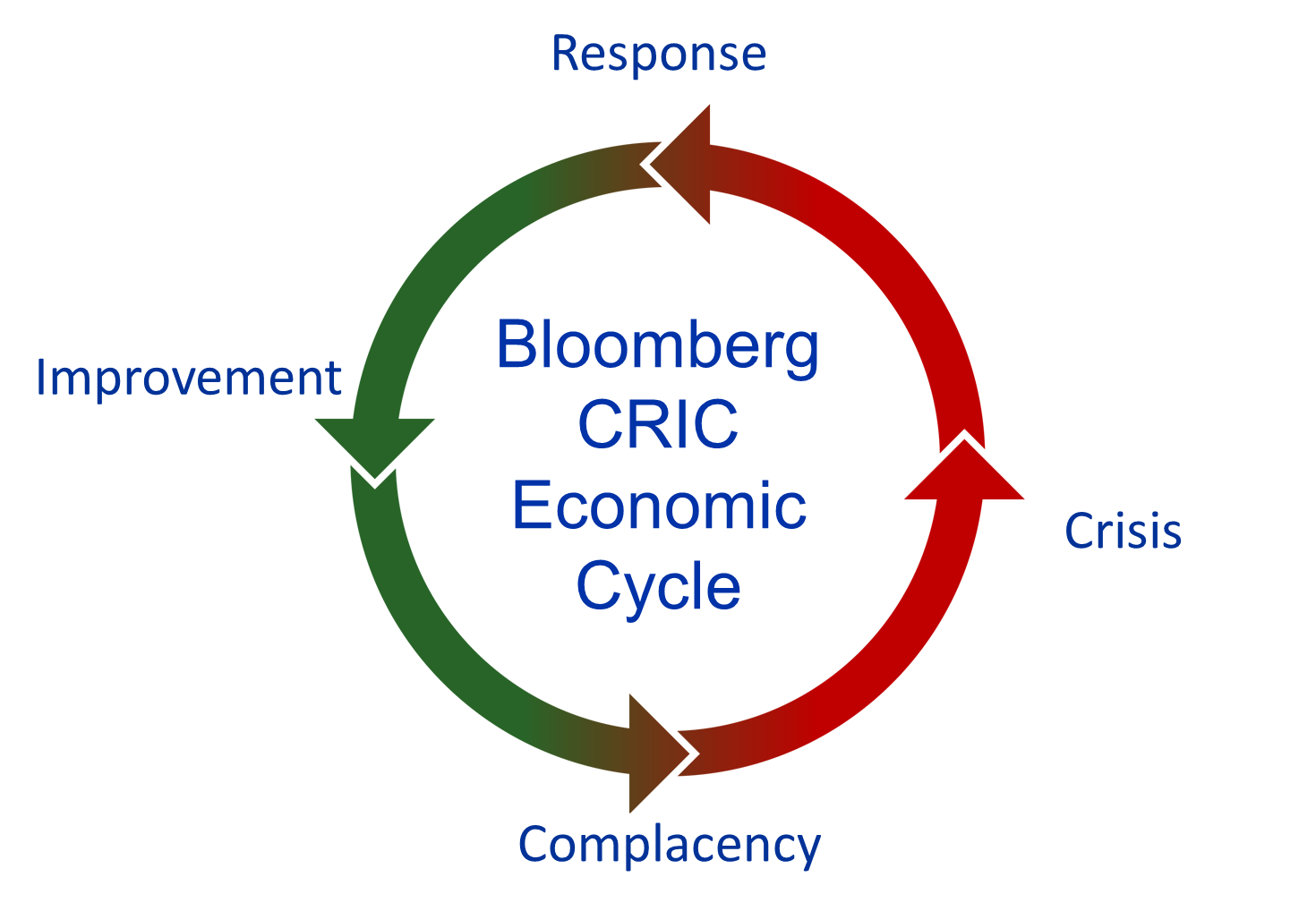When do companies look to undertake a large-scale review of their safety program?
While most safety professionals are continually striving for improvements within their program, large-scale initiatives typically rely on support from other company stakeholders. And for these folks safety is just one of many competing priorities for time and financial resources. If they perceive the safety program to be adequate then their approach to improvement is generally reactive in nature.
The most common reason a company re-evaluates their existing safety program is usually in response to a significant event (fatality, fine, bad press, lawsuit, etc.) or a realization that continual incidents and/or lost-time injuries are getting out of control or are impacting other key metrics.
The complacency over-reaction cycle is a common pattern and it relates to most corporate behavior, not just safety-related initiatives. For example, in the financial sector it is known as Bloomberg’s CRIC Economic Cycle based on Robert Feldman’s 2001 work on Japan’s long economic winter.
 The cycle works as follows: a crisis occurs creating panic and the urgency to react. The response to the crisis usually brings an improvement. Once the improvement has been made, people get comfortable and complacency sets in—which then leads to another crisis and the whole process repeats itself.
The cycle works as follows: a crisis occurs creating panic and the urgency to react. The response to the crisis usually brings an improvement. Once the improvement has been made, people get comfortable and complacency sets in—which then leads to another crisis and the whole process repeats itself.
As a safety professional, understanding this typical reactionary approach can help you build a more proactive approach within your organization in two ways—educating stakeholders about corporate complacency as it relates to safety and other KPIs and also planning your improvement strategies around the natural complacency-reaction cycle.
Ideally, you’ll want to focus on continuous improvement so you’re not waiting for the next crisis. However, knowing that safety will be a priority when worker’s compensation premiums rise or when production is suffering due to injury-related absenteeism does give you a leg up so you should have your improvement plan at the ready when those safety discussion opportunities arise.
To ensure you’re ready to make the leap from reactive to proactive corporate safety you’ll want to:
- Evaluate what you’re currently doing. (What boxes have you already checked on your checklist? Will doing more of those offer you a significant change or only minor improvements?)
- Identify what you’re not doing to find your biggest opportunity. For example, if you’ve done a lot of work getting into compliance but haven’t addressed the behavioral side of safety, then focusing on behavior will offer you a bigger opportunity to improve than implementing more compliance initiatives.
- Look at what other companies and safety professionals are doing within your industry and elsewhere.
- Consider the benefits of hiring a third party for implementation speed instead of trying to do something new yourself.
- Evaluate third parties based on your improvement objectives and their success in meeting similar goals with similar companies.
- Prepare the information your stakeholders will need to form their decision keeping in mind the type of information that is important to each.
By definition, a proactive approach to safety will require addressing things you’re not currently doing. You need an effective safety program that addresses human factors. Look for checklists, categories, and types of activities to find gaps in your program. But you’ll also want to choose wisely and focus on those things that give you the biggest bang for your buck and that have proven themselves with other companies since you will only have so many opportunities for safety improvements.

